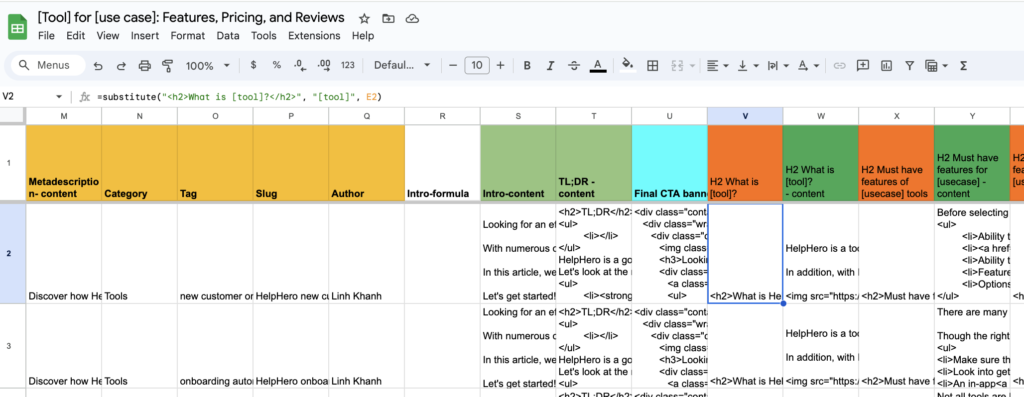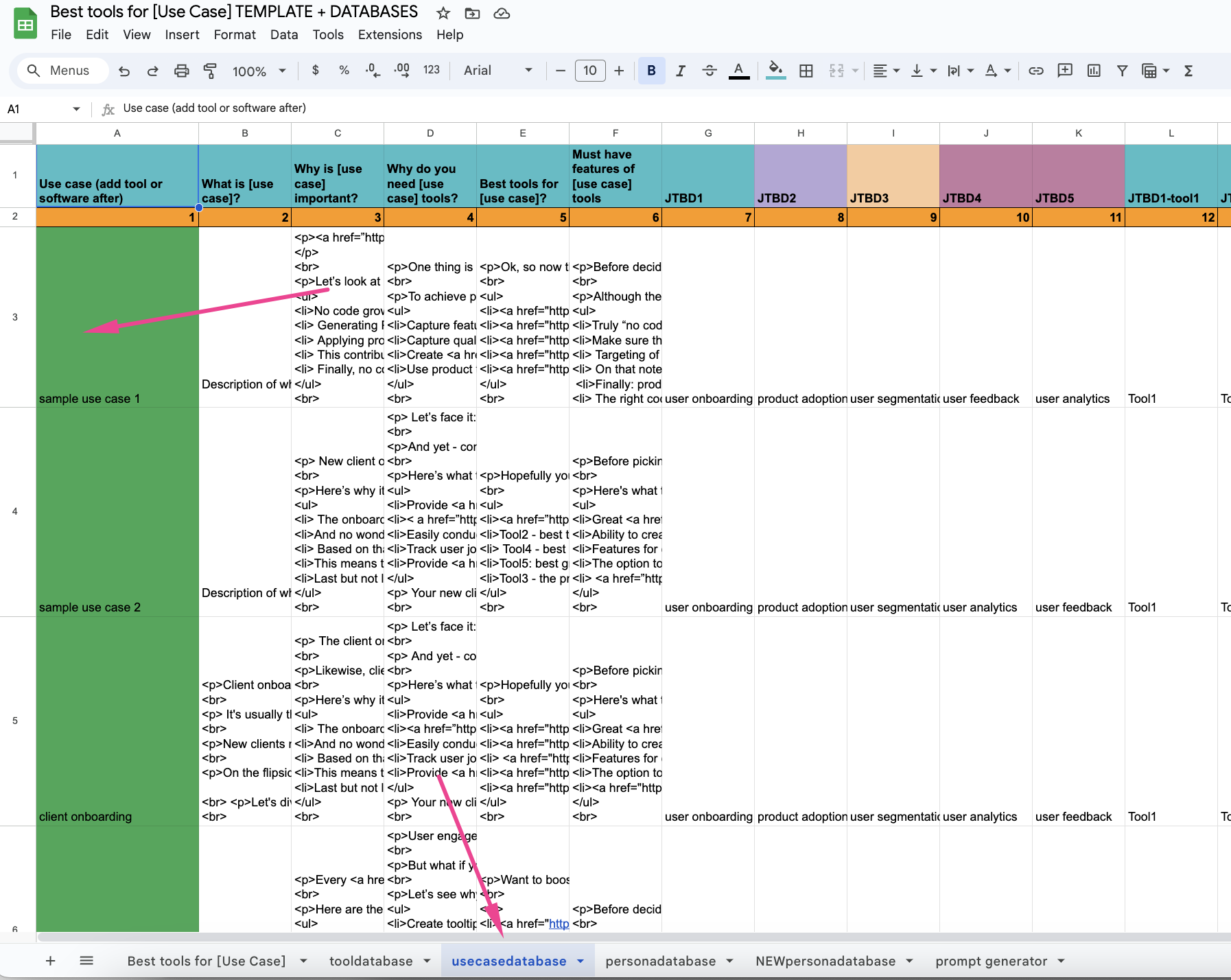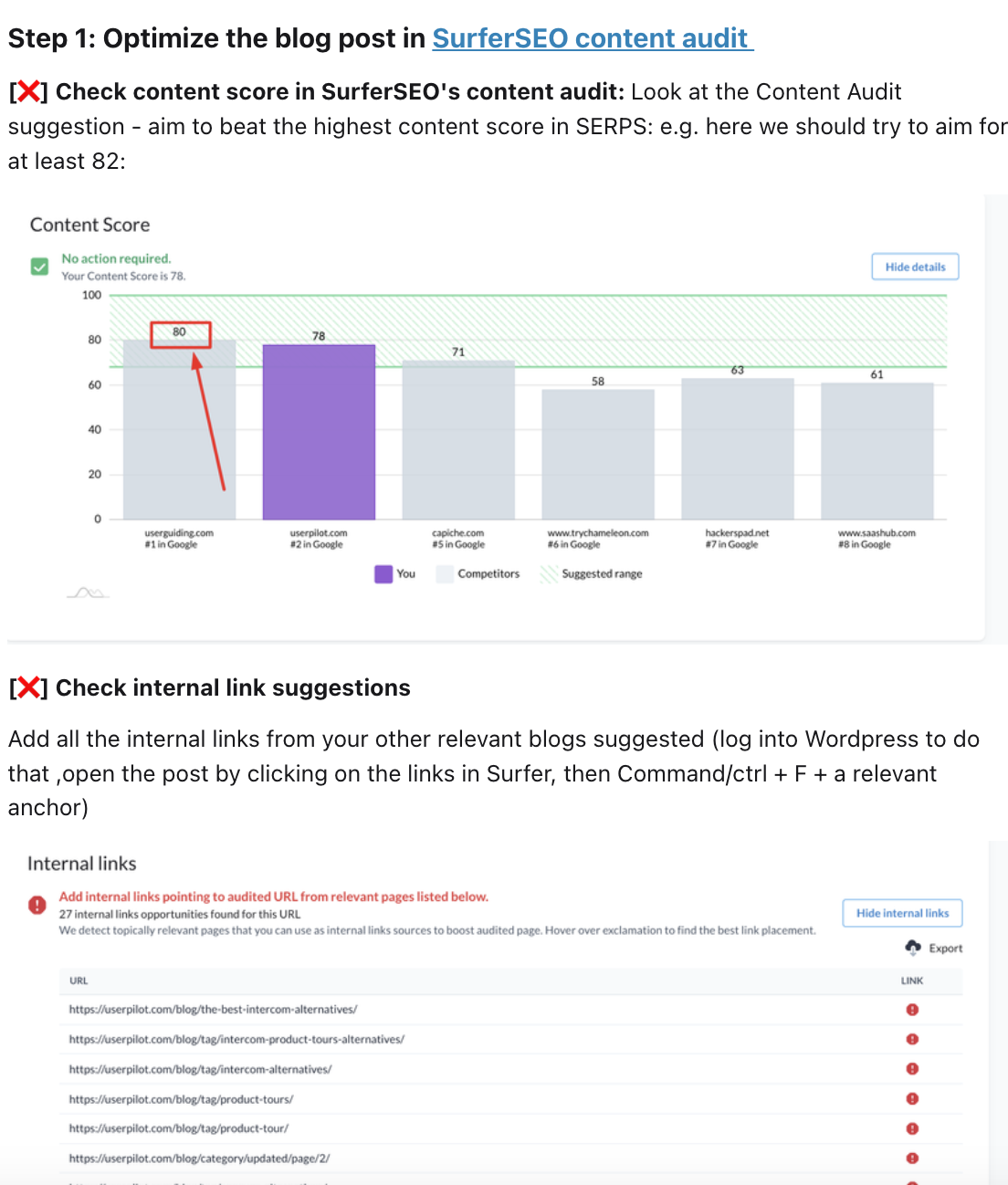You may remember my post about the Programmatic SEO Sheet Template – a tool that helps you produce programmatic posts following the “competitor vs competitor” template (KW combination) without any programming. Before you dive into filling in that sheet (remember, it’s just an example, not gospel), it’s crucial to think about your overall programmatic SEO strategy. Consider your keyword priorities, the post outlines you should create (with sheets), and which keyword combinations you’ve already covered. Additionally, decide whether to keep existing posts or remove poorly performing ones and publish new content instead.
Decide on KW Patterns You Want to Pursue
Before doing anything else, decide which keyword patterns align with your content strategy and are worth pursuing with programmatic SEO. Programmatic SEO works best when you have a large volume of keyword combinations that allow you to produce formulaic posts that follow the same patterns.
Examples include:
- <competitor> vs <competitor>
- <competitor> alternatives / competitors
- <your tool> vs <competitor>
- <your tool> alternatives
- <competitor> <feature>
- Best tools for <use case1> / <use case2>/ <use case3>
- Best tools for <target persona>
- <metric> vs. <metric>
- How to improve <metric>?
Prioritize all These Different Keyword Patterns by Search Volume
I discussed this more in my post “The Maths Behind BoFu KWs”. Ranking your keyword patterns will help you prioritize which topics to tackle first in your programmatic SEO strategy.
Make a List of All Viable KW Combinations in These Patterns
Since we’re talking about variables without repetition, whenever you have more than 10 keywords to combine, you’ll end up with hundreds of possible blog post topics. Tools like MergeWords can help you generate all possible unique combinations.
Run SV Analysis
Next, run your list of keywords through Ahrefs KW Explorer (or another keyword research tool) and record the search volumes (SVs). While covering zero-search-volume keywords can be part of this strategy, prioritize those with the highest SV at the top of your spreadsheet.
Check Which KW Combinations you’ve already Covered
To avoid creating duplicate content, check if you’ve already covered any of the keyword combinations on your list. If you don’t have a clear list of keywords you’ve already written content on, use Google Data Studio. Create a GDS table using Search Console as the source, your list of keywords as the row dimension, and date month as the column dimension with average position as the metric. Remove any keywords where you’re already ranking on page 1 or 2 from your list. If you have old content ranking poorly, replace it with new content and redirect the old URL if needed.
Develop an Outline for the KW Pattern (Based on SurferSEO)
It’s time to use SurferSEO or another content intelligence tool like Clearscope, Outranking, or MarketMuse. Look at the suggested outlines for five keywords from each pattern and create a “universal” outline with variables.
For example:
- Intro
- H2-1: Competitor1 vs Competitor2 – differences and similarities
- H2-2: <competitor1> vs <competitor2> – is there a better alternative for <usecase1>?
- H2-3: <competitor1> vs <competitor2> <use case1> differences
- H3-1: <competitor1> vs <competitor2> <feature1>
- H3-2: <competitor1> vs <competitor2> <feature2>
- H3-3: <competitor1> vs <competitor2> <feature3>
- H3-4: Better alternative: what are <feature1>, <feature2>, <feature3> like in <yourtool>?
- H2-4: <competitor1> vs <competitor2> <use case2> differences
- H3-5: Better alternative: what is <usecase2> like in <yourtool>?
- H2-5: <competitor1> vs <competitor2> – pricing
- Conclusion
Create Your Spreadsheet Template (Outline)

Prepare a spreadsheet that will serve as both your dataset and the generator for your outputs. The spreadsheet should include reference columns like keyword (combination of competitors), page ID, and search volume. It should also have dataset columns for variables such as competitor1, competitor2, your tool, use cases, and features, as well as meta-text columns like post type, slug, metatitle, and meta description formulas.
Create & Fill in Your Database

Fill in your database columns with reliable data. You can use VAs to do this or write a Python script to scrape data, such as from your own blog. Then, upload your CSV to a WordPress Import/Export plugin and run it to create a post draft for every row in your sheet (each KW combination).
Repurpose Outputs with WordTune
Use WordTune to repurpose each blog output in WordPress or Google Docs, ensuring unique content for the formulaic parts of your posts.
Run Outputs Through SurferSEO

Before publishing, optimize your content to achieve a content score of 80 or higher using SurferSEO.
Add Relevant Images + Internal Links
If you haven’t included images in your database, add them now, along with internal links to your post. You can include the HTML code for images you’ve already uploaded to WordPress in the relevant sections.
Plagiarism Check
Perform a final plagiarism check using free tools like Plagiarism Detector.
Final SEO Check + Publish Outputs
After completing all the steps, perform a final SEO check, and then publish your content. And that’s it—you’re done! 🙂
“`